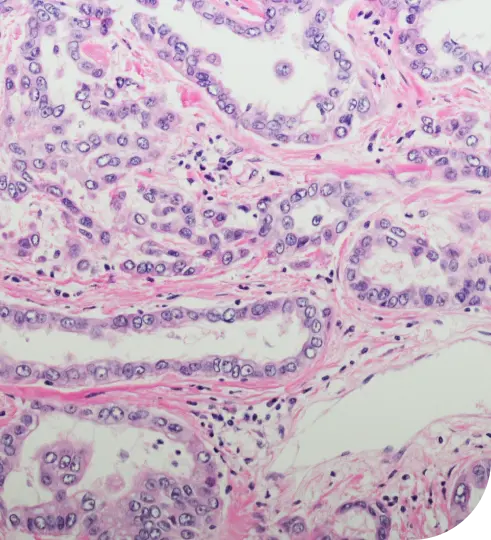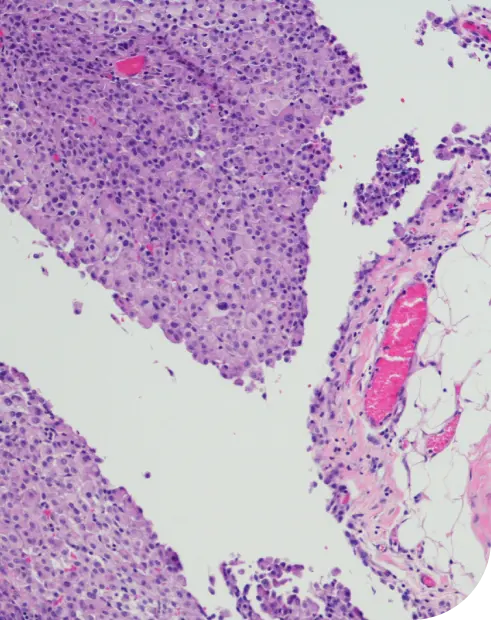Mesothelioma Survival Rates
Mesothelioma survival rates depend on several factors, including the type of mesothelioma, stage of cancer, treatments, and the patient’s age and overall medical condition. Survival rates are generally higher for peritoneal mesothelioma than for pleural mesothelioma, and some patients survive significantly longer than expected.
Home » National Mesothelioma Law Firm » Mesothelioma Cancer » Mesothelioma Survival Rates
Mesothelioma is a rare but aggressive type of cancer that forms in the membranes around certain organs, including the lungs and digestive system. Mesothelioma survival rates depend on the type of mesothelioma, stage of cancer, treatments, and the patient’s age and overall medical condition.
When a patient is diagnosed with mesothelioma, their first question is often, “How long do I have to live?” This question is difficult for doctors because it’s impossible to predict precisely how long a person will survive.
How are mesothelioma survival
rates measured?
In general, there are two ways that doctors determine a patient’s prognosis or the expected outcome for that patient:
- Life expectancy: the length of time the average person lives after their diagnosis.
- Survival rate: the percentage of patients that survive for a given time.
In other words, looking at life expectancy answers the question, “How long am I likely to live?” Looking at survival rates answers the question, “How likely is it that I’ll live for a certain period?” Both of these measurements can be helpful to patients in determining what they can expect when diagnosed with mesothelioma.
A survival rate is determined in terms of a particular length of time. The survival rate can be calculated for any given time, but one-year survival, two-year survival, and five-year survival are commonly measured in mesothelioma research. Survival rates are always reported as a percentage.
There are a few ways to measure survival rates:
- The overall survival rate is the percentage of patients with the condition
who survive for a given time, regardless of their cause of death. This is
the simplest way to measure survival rates. - The relative survival rate is the percentage of how likely people with
the disease are to survive for a certain amount of time compared to the
general population of people who don’t have the disease. - The disease-free survival rate is the percentage of patients who don’t
show evidence of disease after a particular treatment; it indicates how
effective a treatment is. For cancer patients, this measures the
percentage of people in remission from their cancer at a given time. - The progression-free survival rate is the percentage of patients whose
disease has not progressed during or after treatment. Patients may still
have their cancer, but it’s under control, and there’s no evidence that it’s
actively growing or spreading.
The terms used to describe mesothelioma prognosis can be confusing. A study may report on “overall survival” when what it’s really describing is life expectancy. If a study reports that overall survival in mesothelioma patients is 21 months, this is actually the life expectancy for a patient at the time of diagnosis.
On the other hand, if the study describes “two-year overall survival” as 24 percent, this refers to the survival rate. A survival rate will always be reported as a percentage, and a particular period will be defined. By contrast, life expectancy will be reported as a length of time.
It’s important to keep in mind that a prognosis, whether it’s described using life expectancy or survival rates, is only an average. It’s never possible to predict exactly how long a specific patient will live. It’s important to stay focused on your own health during your treatment and to stay in a positive frame of mind.
Survival Rates for Pleural Mesothelioma
Pleural mesothelioma forms in the pleura, which is the membrane around the lungs. This is the most common form of mesothelioma, affecting about 80 percent of all mesothelioma patients. Pleural mesothelioma is strongly linked to asbestos exposure.
Data from the American Cancer Society shows that, overall, the five-year relative survival rate for pleural mesothelioma is 12 percent. This means that a person with pleural mesothelioma is only 12 percent as likely to live for five years as they would have been if they didn’t have the cancer.
In a large analysis spanning 20 years of data on mesothelioma patients in Translational Oncology, researchers reported the following overall survival rates for people with pleural mesothelioma:

One-year survival rate
73.1%
Three-year survival rate
22.9%
Five-year survival rate
12%
Ten-year survival rate
4.7%
Survival Rates for Peritoneal Mesothelioma
Peritoneal mesothelioma forms in the peritoneum, which is the membrane around the digestive system. This is the second most common form of mesothelioma.
Peritoneal mesothelioma survival rates tend to be higher than those for pleural mesothelioma. The following overall survival rates were also reported in the previously mentioned Translational Oncology:
One-year survival rate
91.6%
Three-year survival rate
73.8%
Five-year survival rate
65.3%
Ten-year survival rate
39.4%

Survival Rates for Pericardial and Testicular
Mesothelioma
Pericardial and testicular mesothelioma are rare types of the cancer. Case Reports in Oncological Medicine reveal that they only account for 1-2% of all mesothelioma cases.
Medical professionals examined data from the Surveillance, Epidemiology, and End Results program that ran from 1973 to 2015 and found that pericardial mesothelioma has a one-year survival rate of 22% and a two-year survival rate of 12.2%. These findings were presented via the Seminars in Thoracic and Cardiovascular Surgery in 2021. Many patients aren’t diagnosed with pericardial mesothelioma until after surgery, or an autopsy is performed.
With data from the National Cancer Institute’s SEER database, testicular mesothelioma patients have a five-year survival rate of 49%.
Factors That Affect the Survival Rates of
Mesothelioma
There are a few factors that can influence the survival rates for mesothelioma patients, providing a more accurate estimate of a particular patient’s likely outcome.

Stage
The stage of a cancer is how advanced it is at the time of diagnosis. The mesothelioma cancer stage has a significant impact on survival rates, with patients diagnosed in earlier stages likely to survive for several years than those diagnosed at later stages.
For example, for pleural mesothelioma, the five-year relative survival rates as reported by the American Cancer Society:
- 20 percent for those with localized disease (where the cancer remains in the pleura)
- 16 percent for those with regional disease (where the cancer has spread to nearby parts of the body)
- Eight percent for those with distant disease (where the cancer has spread more widely within the body)
These numbers apply to the stage of the cancer at the time of diagnosis. Although patients with localized disease may later progress into a more advanced stage, this is already taken into account by the data.

Cell Type
The cell type of a cancer refers to the specific characteristics the cancer cells demonstrate. There are three main cell types of mesothelioma: biphasic, epithelioid, and sarcomatoid.
In general, patients with epithelioid mesothelioma have the best prognosis. A study published in 2016 in the Journal of Thoracic Oncology showed that the one-year survival rate for patients with epithelioid mesothelioma was 69 percent. For those with sarcomatoid or biphasic tumors, it was 29 percent.

Age
The patient’s age at the time of diagnosis plays a significant role in determining the survival rate, with older patients being less likely to survive for several years after diagnosis. For example, with data from Lung Cancer International, the following chart compares the overall survival rates for male patients with localized (early-stage) pleural mesothelioma in two different age groups:
| 1-year survival rate | 2-year survival rate | 5-year survival rate | |
| Age 30 to 49 | 58% | 43% | 34% |
| Age 50 to 79 | 46% | 22% | 7% |
| Age 30 to 49 | 58% |
| Age 50 to 79 | 46% |
| Age 30 to 49 | 43% |
| Age 50 to 79 | 22% |
| Age 30 to 49 | 34% |
| Age 50 to 79 | 7% |
Note that survival rates for older patients are significantly lower than for younger patients. Of course, older people would have been more likely to die than younger people even if they didn’t get cancer. However, it’s also believed that an older person’s body is less able to tolerate the effects of cancer and its treatment, making older patients more likely to die of their disease.

Gender
Women with mesothelioma appear to have higher survival rates than men. Data from the National Cancer Institute indicates that the five-year relative survival rate for mesothelioma is 19.5 percent for women and only 8.8 percent for men.
This gender difference may be partly explained by the type of mesothelioma. Pleural mesothelioma is much more common in men, while peritoneal mesothelioma is found in approximately equal numbers of men and women. Because peritoneal mesothelioma generally has a higher survival rate than pleural mesothelioma, this could help explain why women seem to have higher survival rates from mesothelioma overall.
However, this factor doesn’t fully explain the gender difference. Even for the same type of mesothelioma, women seem to have somewhat better outcomes than men. For example, in 40-year-old patients with pleural mesothelioma, a woman has a life expectancy of nine years, while a man has a life expectancy of only six years, as reported in Lung Cancer International.
While the reasons for this are not fully understood, differences in hormone levels between men and women may play a role by affecting the growth of cancer cells or the body’s response to treatments.

Treatments
Treatments such as surgery, chemotherapy, and radiation therapy can significantly improve survival rates for some patients. It’s important to select a mesothelioma treatment plan carefully, as many treatments are shown to be beneficial for some patients but not for others.
Mesothelioma multimodal therapy, which involves using a combination of different treatments, can help improve survival for pleural mesothelioma patients. Surgery plus systemic chemotherapy raises the five-year survival rate to 24 percent, according to a study published in the European Journal of Cardio-Thoracic Surgery. To be eligible for this form of treatment, patients must be diagnosed in an early stage and with a favorable cell type, and be in relatively good health overall.
For patients with peritoneal mesothelioma, a combination of surgery and chemotherapy known as CRS-HIPEC is generally the gold standard of treatment. Although not all patients are eligible for this procedure, it offers good outcomes for those who undergo it. Studies published in Minerva Surgery have reported a one-year survival rate of 63 percent and a five-year survival rate of 44 percent for peritoneal mesothelioma patients who undergo CRS-HIPEC.
By submitting this form, you agree to our terms & conditions. Please read the full disclaimer


